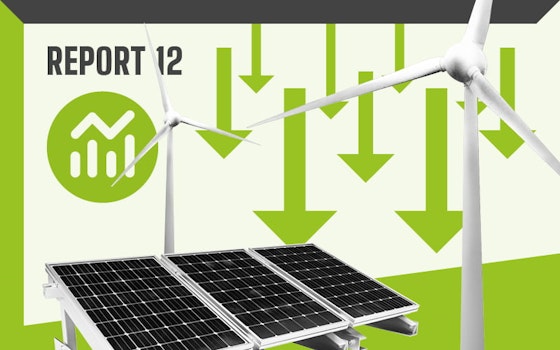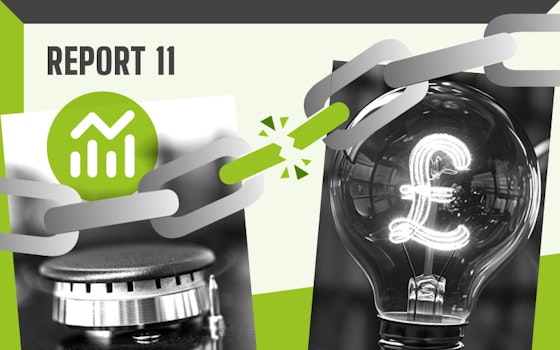
Breaking the Link: The Macroeconomic Case for Fixing Britain’s Energy Market
How lower electricity prices could boost growth, cut inflation and leave every Brit better off
Report releasedDecember 11, 2025
View ReportSee the full report on the Green Britain Foundation website
Historically, many policymakers and observers viewed environmental protection and economic growth as competing aims—so-called “green” measures were considered desirable for climate but expensive for consumers or governments. In recent years, renewable technology costs have plummeted while the urgency of decarbonisation has increased. This study therefore set out to quantify the financial returns of shifting investment from fossil fuels to renewables, focusing on:
Value to UK GDP (measured as Gross Value Added, or GVA, and converted to GDP equivalents).
Job Creation (direct, indirect, and induced employment generated per billion pounds invested).
Investment Requirements (particularly under the UK’s net zero 2050 commitments).
A primary goal is to provide updated data for policymakers and stakeholders, confirming the economic case for accelerating, rather than slowing, the transition to green energy.
Green Energy Delivers Higher Returns to GDP
Solar: Investing £1 billion in UK solar can yield approximately £1.88 billion in GDP—1.7 times more than the equivalent outlay in coal, oil, or gas.
Onshore Wind: Yields around £1.16 billion in GDP per £1 billion invested.
Offshore Wind: Yields around £0.86 billion in GDP per £1 billion invested.
Fossil Fuels: In contrast, every £1 billion spent on coal, oil, or gas returns just about £1.11 billion in GDP.
Clean Energy Projects Generate More Jobs
Solar: Up to 16,400 full-time-equivalent jobs (FTE-years) per £1 billion invested, roughly 2.5 times higher than fossil fuel investment.
Onshore Wind: About 6,200 FTE-years per £1 billion invested.
Offshore Wind: About 4,900 FTE-years per £1 billion invested.
Fossil Fuels: Around 5,700 FTE-years per £1 billion invested—lower than solar and only marginally higher than onshore wind on a per-pound basis.
Accelerating Net Zero
Meeting the UK’s legally binding net zero targets will require significant new renewable capacity. According to the Climate Change Committee (CCC), Britain will need to generate 514 TWh per year from offshore wind, onshore wind, and solar by 2050. Achieving just the wind and solar portion could create 200,000 jobs annually while adding approximately £29 billion in GDP each year.
Geographic and Sectoral Distribution
England currently captures the largest share of economic benefits from both onshore and offshore wind investments, though Scotland has a strong onshore wind footprint.
Sectors benefiting the most include electricity generation, construction, professional/technical services, and manufacturing/supply chain industries for turbines and solar equipment.
Biomass, Waste, and Energy Efficiency
Biomass & Waste: The research also looked at biomass investment, which can yield about 20,300 FTE-years per £1 billion invested—a high figure reflecting certain large-scale projects.
Energy Efficiency: Insulation and other efficiency measures can create an even higher jobs dividend but require upfront policy and financing support.
Green Gas Mills: Case studies show strong economic multipliers in terms of GVA and jobs, but feedstock costs currently mean negative return on investment if these projects rely solely on present market conditions without additional policy support.
The analysis divides economic impacts into direct, indirect, and induced effects:
Direct: Jobs and GDP created by the immediate renewable energy investment (e.g., building solar farms, manufacturing turbines).
Indirect: Supply-chain benefits (e.g., logistics, component suppliers, services).
Induced: Further economic activity generated when new workers spend wages in local economies.
By summing these multiplier effects, the study arrives at total impacts for each £1 billion invested. Solar shows particularly high multipliers, generating nearly £1.9 billion in GDP equivalents due to extensive supply-chain and induced spending. Fossil investments show far more modest knock-on effects, partly because much of the supply chain is global, and extraction is capital-intensive with fewer domestic labour requirements.
Solar: Approx. 85% of solar-related GDP and job gains accrue to England, partly due to population density and administrative HQs being located there.
Onshore Wind: Scotland benefits strongly from onshore wind deployment; up to half of job impacts can occur there due to resource availability and existing wind expertise.
Offshore Wind: Concentrated in coastal regions with established supply-chain capabilities.
The Climate Change Committee’s Balanced Pathway forecasts a major ramp-up in wind and solar capacity to fully decarbonise the electricity grid by 2050. The analysis here suggests that each additional £1 billion allocated to renewable generation would not only slash emissions but yield disproportionately high returns in jobs and GDP compared to similar spending on fossil-based power infrastructure.
Annual Investment Needs: About £23 billion per year in wind and solar is required to reach the net zero power sector milestone by mid-century.
Economic Opportunity: This consistent investment would mean tens of thousands of permanent jobs, stable local tax bases, and a reorientation of the UK economy toward higher-value manufacturing and services.
Rather than a burden, the Green Economy Report frames decarbonisation as an unparalleled economic opportunity. The study’s findings rebuke the notion that environmental policy is primarily a cost sink. Instead, each pound directed into wind and solar can generate more GDP growth and more jobs than an equivalent pound spent on fossil fuels. Over the long term, renewables also provide energy security, stable electricity prices, and alignment with the UK’s climate commitments.
Key Takeaways:
Scaling up renewables creates more jobs and drives greater GDP growth than fossil projects.
The UK’s net zero pathway can deliver a sustained economic boost if policy consistently backs wind, solar, and complementary technologies such as energy storage and efficiency.
Green Gas and biomass hold further potential, though current market conditions often require policy nudges for positive returns.
Ultimately, investing in green energy is “not about polar bears and ice caps any more,” but about jobs and GDP—and the data strongly supports fast-tracking the transition for economic as well as environmental advantages.
How lower electricity prices could boost growth, cut inflation and leave every Brit better off
Report releasedDecember 11, 2025
View ReportA practical plan to bring prices down, tackle inequality and stabilise our economy
Report releasedOctober 27, 2025
View ReportA new plan to end Britain’s dependence on gas prices and bring down electricity costs
Report releasedOctober 27, 2025
View ReportBritain could’ve saved £50bn with North Sea CfDs. Lower bills, secure jobs, fair energy transition — no more chaos or windfalls for fossil giants. Time to fix the system.
Report releasedSeptember 11, 2025
View Report

